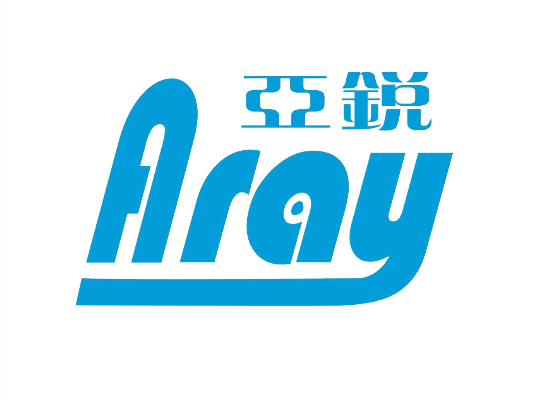Posture | Why do pine trees produce turpentine?
摘要:Careful observation of pine trees will find that pine trees often flow out of a liquid, that is, pine resin, precious amber is evolved from turpentine.
Careful observation of pine trees will find that pine trees often flow out of a liquid, that is, pine resin, precious amber is evolved from turpentine.
What is turpentine?
Turpentine refers to the resin contained in pine trees or secreted from pine trees. It is a viscous liquid that flows in the resin canal, and the turpentine flows out drop by drop, which is a time-consuming process that can last for more than a dozen or even dozens of hours. Rosin is also the main raw material for the production of rosin and turpentine.
Rosin is the product of photosynthesis in pine trees. Under the sunlight, the chloroplasts in the pine leaves continuously absorb and use light energy for photosynthesis, and under the combined action of chlorophyll and enzymes, the absorbed carbon dioxide and water are converted into energy-rich organic compounds, namely proteins and sugars and other substances, and produce oxygen. The sugars produced then go through a series of biochemical reactions, through various intermediate products, and then generate rosin in the xylem secretory cells. Therefore, in order to increase the production of turpentine, it is necessary for the pine to have lush branches and leaves, developed roots and sufficient light, to provide sufficient nutrition for the pine and enhance the physiological metabolism of the tree, so that photosynthesis can be more fully carried out, in order to obtain more turpentine.
How is turpentine formed?
Rosin is synthesized and secreted by secretory cells. Under the effect of the structure of the cell membrane and the secretion pressure, the turpentine is transferred outward from the secretory cell. This process is to selectively transport the solute inside and outside the cell from the high concentration side to the low concentration side, so that the turpentine penetrates through the cell membrane and concentrates in the resin canal. After the resin canal is filled with turpentine, the lipid secreting cells squeeze the water in the protoplasm into the surrounding dead cells, and the lipid secreting cells are flat and their volume shrinks under pressure. At this time, the secretory pressure of the cell is less than the osmotic pressure of the cell, the secretory pressure is no longer effective, and the penetration of rosin becomes slow or completely stopped.
When the resin canal is cut, the turpentine flows out under the action of pressure until the pressure gradually weakens. At this time, the squeezed lipoid cells absorb water and expand, and the lumen of the resin canal is gradually filled with lipoid cells, and a new round of turpentine is produced again. Under the continuous interaction between the secretory pressure of the lipocyte and the osmotic pressure of the resin canal, the changes in the resin canal are continuously circulated, and the rosin is re-formed and exocrine is secreted. Therefore, in the case of regular cutting of rosin, pine trees can continue to produce fat.
Resin canal is a unique physiological structure of pine trees, in which rosin flows. It is distributed in xylem, conifer and primary cortex, and forms three independent systems. According to the arrangement of resin channels, it can be divided into transverse resin channels and longitudinal resin channels, which communicate with each other in the wood to form resin channels. When cutting the turpentine, a cut is made in the xylem on the outer edge of the trunk, and the turpentine will flow out through the resin channel.
The cut rosin needs to be processed in time to ensure the quality of rosin and turpentine. If the turpentine is exposed to the air for a long time, it will volatilize and oxidize, turn yellow and dry, such turpentine is generally called "hairy rosin", and the product after processing and extraction will decrease in grade and yield.
The use of turpentine
The use of turpentine is very wide, such as the daily life of the rosin on the erhu strings can increase the sound of the instrument, printing ink is also mixed with turpentine. Rosin can also be used as an important raw material in chemical products, such as soap industry, paper industry, paint and coating industry, adhesive industry, rubber industry, food industry, electrical industry, building materials industry and so on.
What is turpentine?
Turpentine refers to the resin contained in pine trees or secreted from pine trees. It is a viscous liquid that flows in the resin canal, and the turpentine flows out drop by drop, which is a time-consuming process that can last for more than a dozen or even dozens of hours. Rosin is also the main raw material for the production of rosin and turpentine.
Rosin is the product of photosynthesis in pine trees. Under the sunlight, the chloroplasts in the pine leaves continuously absorb and use light energy for photosynthesis, and under the combined action of chlorophyll and enzymes, the absorbed carbon dioxide and water are converted into energy-rich organic compounds, namely proteins and sugars and other substances, and produce oxygen. The sugars produced then go through a series of biochemical reactions, through various intermediate products, and then generate rosin in the xylem secretory cells. Therefore, in order to increase the production of turpentine, it is necessary for the pine to have lush branches and leaves, developed roots and sufficient light, to provide sufficient nutrition for the pine and enhance the physiological metabolism of the tree, so that photosynthesis can be more fully carried out, in order to obtain more turpentine.
How is turpentine formed?
Rosin is synthesized and secreted by secretory cells. Under the effect of the structure of the cell membrane and the secretion pressure, the turpentine is transferred outward from the secretory cell. This process is to selectively transport the solute inside and outside the cell from the high concentration side to the low concentration side, so that the turpentine penetrates through the cell membrane and concentrates in the resin canal. After the resin canal is filled with turpentine, the lipid secreting cells squeeze the water in the protoplasm into the surrounding dead cells, and the lipid secreting cells are flat and their volume shrinks under pressure. At this time, the secretory pressure of the cell is less than the osmotic pressure of the cell, the secretory pressure is no longer effective, and the penetration of rosin becomes slow or completely stopped.
When the resin canal is cut, the turpentine flows out under the action of pressure until the pressure gradually weakens. At this time, the squeezed lipoid cells absorb water and expand, and the lumen of the resin canal is gradually filled with lipoid cells, and a new round of turpentine is produced again. Under the continuous interaction between the secretory pressure of the lipocyte and the osmotic pressure of the resin canal, the changes in the resin canal are continuously circulated, and the rosin is re-formed and exocrine is secreted. Therefore, in the case of regular cutting of rosin, pine trees can continue to produce fat.
Resin canal is a unique physiological structure of pine trees, in which rosin flows. It is distributed in xylem, conifer and primary cortex, and forms three independent systems. According to the arrangement of resin channels, it can be divided into transverse resin channels and longitudinal resin channels, which communicate with each other in the wood to form resin channels. When cutting the turpentine, a cut is made in the xylem on the outer edge of the trunk, and the turpentine will flow out through the resin channel.
The cut rosin needs to be processed in time to ensure the quality of rosin and turpentine. If the turpentine is exposed to the air for a long time, it will volatilize and oxidize, turn yellow and dry, such turpentine is generally called "hairy rosin", and the product after processing and extraction will decrease in grade and yield.
The use of turpentine
The use of turpentine is very wide, such as the daily life of the rosin on the erhu strings can increase the sound of the instrument, printing ink is also mixed with turpentine. Rosin can also be used as an important raw material in chemical products, such as soap industry, paper industry, paint and coating industry, adhesive industry, rubber industry, food industry, electrical industry, building materials industry and so on.




